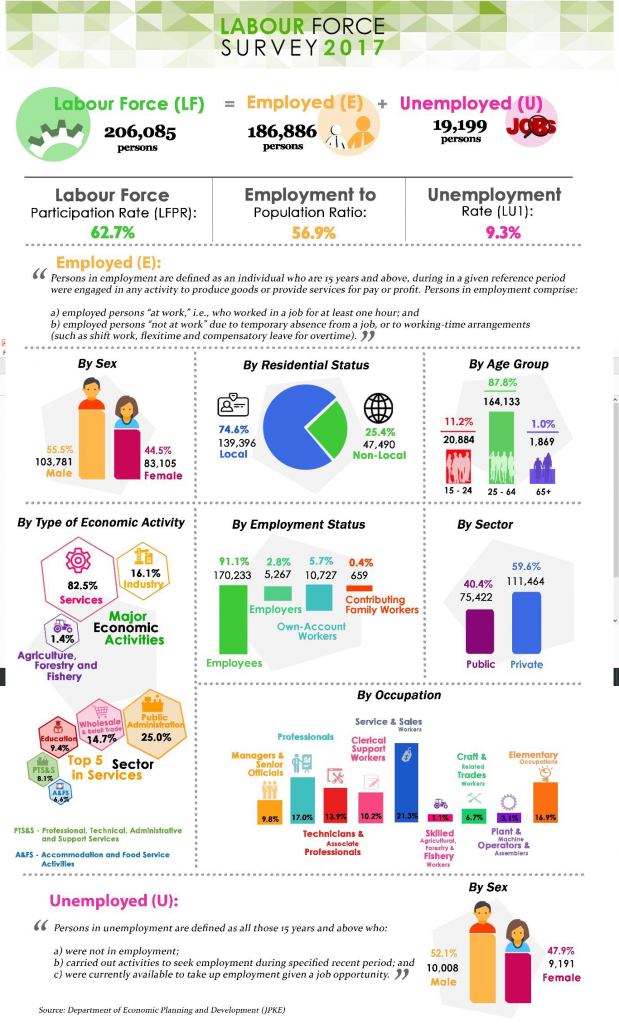BANDAR SERI BEGAWAN — Brunei’s unemployment rate rose to 9.3 percent in 2017 from 6.9 percent in 2014, data from the Department of Statistics, Department of Economic Planning and Development (JPKE) indicated.
The latest statistics, which were the findings from the Labour Force Survey 2017, puts the number of unemployed persons at 19,200, out of which 18,200 are locals. It also showed that there are more unemployed men than women — at 52.1 percent for males (10,008 persons) compared to 47.9 percent (9,191 persons) for the opposite sex.
Among the unemployed, 28.4 percent or 8,500 persons are youths aged 15 to 24 years.
JPKE conducted the Labour Force Survey between October 16 and November 12 2017 to update information on the size, structure, distribution and characteristics of the labour force, employment, unemployment and other economic characteristics of the population. The findings will be used to assist in the planning, research, policy-making and management concerning the nation’s labour force.
According to the survey, more people are now working in the private sector compared to previous years. The number of locals employed in the private sector last year was 66,400 persons compared to 54,000 in 2014 — a 6.9 percent increase, bringing the ratio of public to private sector employment to 40:60 in 2017.
Among other findings, the Labour Force Survey also highlighted labour underutilisation, which refers to the mismatch between labour supply and demand or unmet need for employment among the population and a drop in Brunei’s average monthly income.
In 2017, Bruneians earned almost $400 less than they did in 2014. Findings show that the average income per employed person stood at$1,478, compared to $1,874 in 2014. Local workers also earned a higher monthly income of $1,579 compared to their non-local counterparts who earned $1,180 per month on average.
In regards to underutilisation, the survey results showed that the total number of persons affected was 50,100 persons or 23.1 percent, more than double the national unemployment rate.
His Majesty in a titah last year, urged jobseekers to find employment within the private sector, adding that he was confident the private sector would be prepared to provide opportunities to Brunei’s youth.
Meanwhile, in a March 2018 report, it was disclosed during the Legislative Council meeting that the Manpower Planning Council (MPC) will be setting up a Labour Management Information System aimed at tracking and reducing graduate unemployment. However, no timeline was given.
According to the Minister of Education YB Dato Paduka Hj Hamzah Hj Sulaiman, the system will be able to provide data on job demand from different industries and the private sector. The council was established in 2016 to reduce unemployment and channel human resource into growth industries.
As part of its efforts to reduce the number of unemployed graduates and boosting their marketability, the government introduced the i-Ready Apprenticeship Scheme in April 2017, claiming that the initiative has helped secure 146 permanent jobs as of March 2018.
The recent Labour Force Survey covered about 3,200 selected households throughout the country using systematic sampling method. The data obtained from the selected households were extrapolated according to the sampling weights to represent the total population of Brunei Darussalam. Its results show that there was a total of about 81,100 households and 328,500 persons aged 15 years and above.


